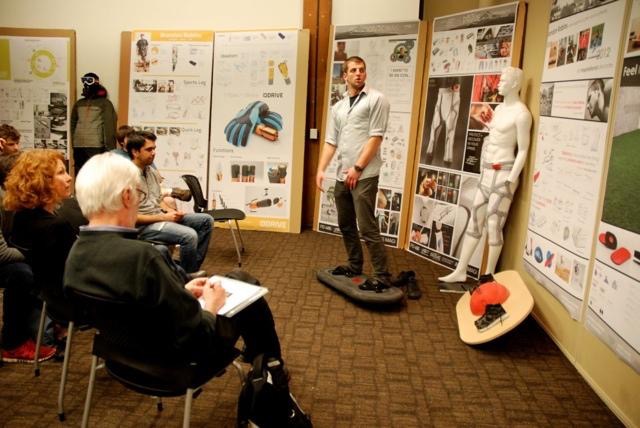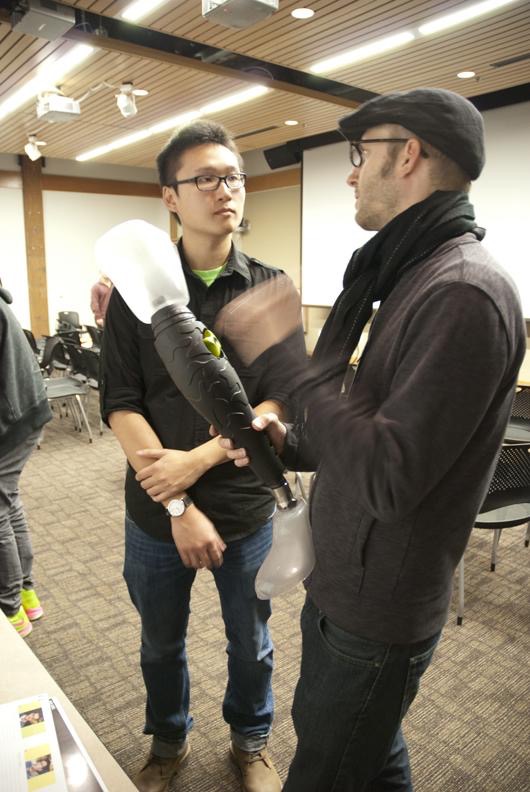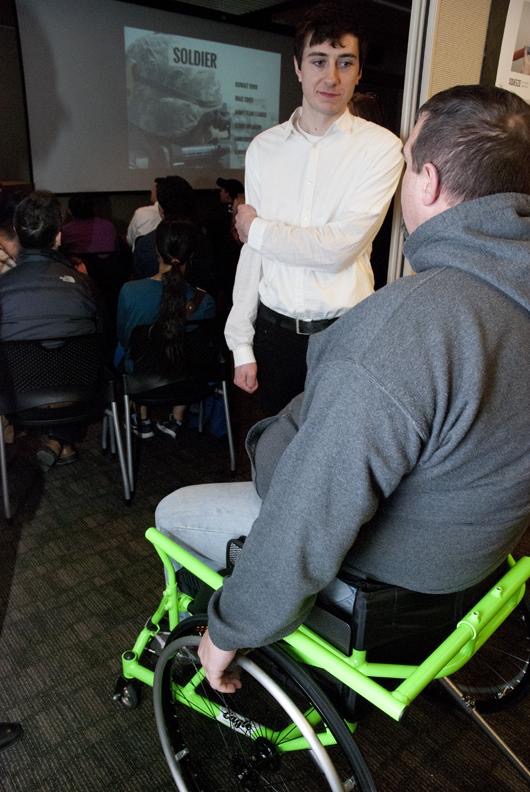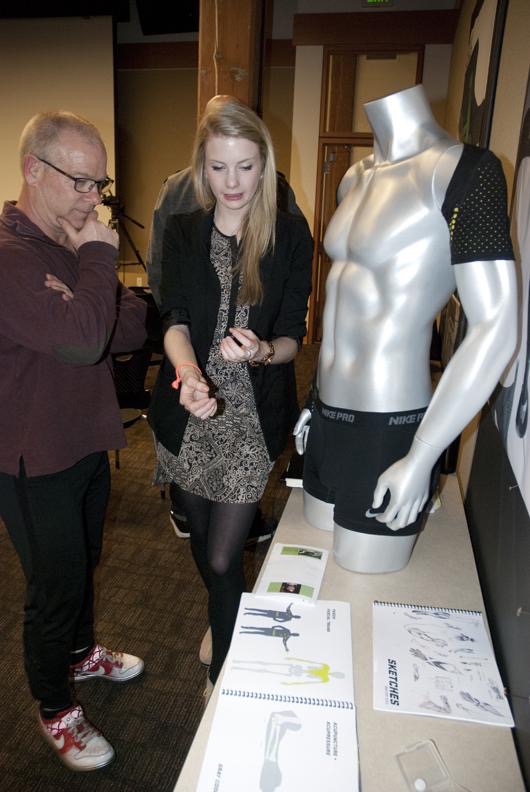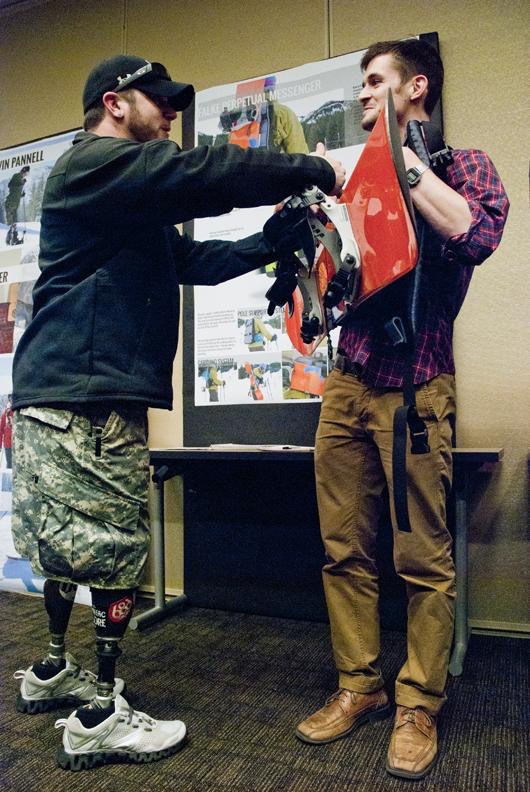Goals of the project
The Adaptive Design project is a project that is embedded in the curriculum that develops physical product lines for athletes with disabilities. Under the guidance of faculty, students work with veterans, who undaunted by their injuries and life situations, are enthusiastically pursuing rigorous athletic dreams on a professional level. This approach helps to foster a designer’s capacity for empathy as they face many critical challenges. Working alongside athletes with disabilities, students create innovative product designs that enable athletes to manifest their full sports potential.
Nature of the Collaboration
Adaptive Design is a collaboration between University of Oregon Product Design instructors, Wilson Smith (‘80 BArch and current Nike, Inc. Design Director), Bob Lucas (former Adidas Group head designer), UO School of Architecture and Allied Arts Dean Frances Bronet, and Product Design program director, Kirersten Muenchinger. Students in the University of Oregon in Portland’s Product Design program were given the opportunity to work with nationally recognized adaptive sports athletes to develop innovative functional products to meet specific to physical challenges. Students worked directly with veteran athletes by repeatedly making and testing prototypes to translate their unique needs into the best product solutions.
Organization: U.S Department of Veterans Affairs, Product Design Program at the University of Oregon, and Nike.
Skills
Ideation sketching to explore initial ideas.
Prototyping using variety of equipment that involve different skills, such as sewing, 3D CAD modeling, 3D rendering, mold making, and spray painting.
Video and audio presentation skills to best communicate with audience.
Tools
A 3D printer, sewing machine, CNC, laser cutter, vacuum former, and spray gun were used to create a variety of working prototypes in different product categories, such as soft goods, hardwares, and mobile devices.
Process
The course is a ten-week studio experience that includes all aspects of product creation from the initial stages of user-centric insights, to product development and final presentation.
Working with rarified users to identify new opportunities and innovative products, students developed their critical thinking, analysis, empathy, interviewing and critical observation skills to develop successful projects.
Students began with identifying problems and opportunities by researching users to understand their needs and unique challenges. Projects had been developed through an extensive design process including ideation sketching, 3D CAD modeling, and physical prototyping.
To develop a viable and desirable product, students made working prototypes by utilizing both analog and digital tools. The physical prototypes were tested with users, and went through multiple iterations to determine the most effective finalized prototypes.
Milestones
Faculty, Wilson Smith and Bob Lucas helped contribute to the dreams and aspirations of these veteran athletes and, by doing so, created a program that would benefit the lives of the athletes and meaningfully contribute to the educational experience of the students. By acknowledging both the body and the courage of these determined individuals, faculty and students have developed more than 30 prototypes to help these veterans with disabilities to improve their quality of their life and be top performers in their sport.
Challenges encountered
The project focused on individuals who have experienced physically altering and traumatic situations during war or day-to-day life upon returning to civilian life. All of these wounded athletes were veterans, each having sustained a life-changing injury: ranging from a catastrophic traffic accident to getting caught in a grenade ambush. The injuries whether suffered during active duty or civilian life altered their day-to-day existence. These men, despite their situations, carried on and pursued active interests, excelling in their sport of choice.
Each user offered unique challenges that required specific, idiosyncratic solutions. Through extensive user observation and studying human physiology and biomechanics, students created customized design solutions, developed multiple prototypes and rigorously tested each idea with their veteran athlete collaborators to determine the most viable solutions. Digital technology and rapid prototyping played a key role in accelerating this process.
Major outcomes
Examples of sports for which products have been developed are rowing, snowboarding, fencing, cycling, and the triathlon. Among the sports products that have been developed are 3D printed prosthetics, customized fencing grips, customized ski poles, specialized clothing, wheelchair bike seats, performance enhancing mobile devices, and backpacks for snowboarders.
Innovations, impact and successes
These design solutions both, helped solve specific problems for Veteran athletes, and also stimulated interest and participation from the Alpha cluster of gear and garment industries in Portland, Oregon, who ultimately desired more education and programs in the University dedicated to the outdoor and sports industry. In response to this interest we are currently developing a Masters Program in Sports Product Design in collaboration with the Business school at the University of Oregon. This has led to a new maker space built with equipment donations from the industry and the university, where students can better prototype soft goods, footwear, and equipment for sports. We have offered workshops led by industry technicians to students and the public on the fabrication of high tech sporting goods with the maker space equipment.
 Wilson Smith
Wilson Smith
 Bob Lucas
Bob Lucas
 Kiersten Muenchinger
Kiersten Muenchinger
